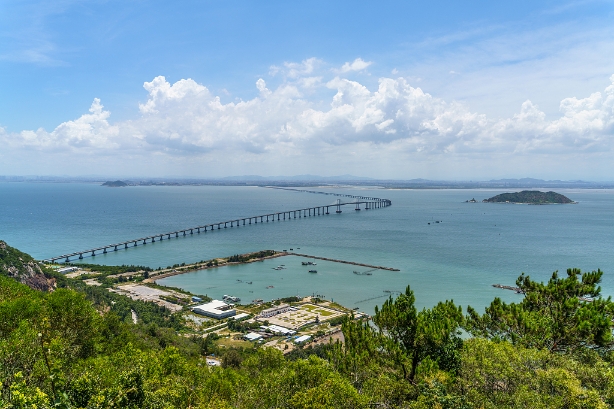Why you should visit China's off-the-beaten-path destinations
- By Jay Birbeck
 0 Comment(s)
0 Comment(s) Print
Print E-mail China.org.cn, February 25, 2021
E-mail China.org.cn, February 25, 2021

You already know about the cosmopolitan glitz of Shanghai and the ancient treasures of the Forbidden City in Beijing, but here's why you should head to China's off-the-beaten-path destinations.
There are many great things about living in China, but surely one of the best is that you can hop on a high-speed train or plane and easily explore the country. With the coronavirus greatly curtailing foreign travel, I've been appreciative of the freedom to explore this diverse part of the world. From the advanced metropolises of the coast to the parched sand dunes of the Tarim Basin, China has no shortage of incredible places to visit. But this year, I wanted to travel to some lesser-known parts of the country.
Sure, it is worth seeing the Great Wall, and the Terracotta Army is awe inspiring, but to fully appreciate the country it's best to combine these world-famous sites with something a little out of the ordinary. Doing so presents travelers with the opportunity to learn more about local culture, support local communities and even save money.
During this Spring Festival, with people discouraged from traveling outside the province in which they are living due to the coronavirus, my girlfriend and I searched for interesting destinations within Guangdong.
We were spoilt for choice. The province boasts a spectacular 4,300km coastline and hundreds of small islands scattered throughout the northern waters of the South China Sea. We searched up and down the coast on Baidu Maps. Eventually our curiosity was piqued by a little island jutting out from the northernmost point of Guangdong's coast near the city of Shantou: Nan'ao Island.
Nan'ao county, which is part of Shantou City, consists of Nan'ao Island and 33 surrounding islands. The main island is covered in dense tropical forests and dotted with small fishing communities and sheltered beaches. Like many people, I'd never heard of it until I booked the trip.
Venturing off the beaten path, I was instantly immersed in the local culture. Many of the hotels, restaurants and tourist attractions on the island are owned by locals and the streets of its towns were filled with independent stores. Everybody had a story to tell. In one restaurant, a waitress told us about how local residents still searched for ancient treasure said to have been buried there by the infamous pirate, Wu Ping, in 1565.
There were also plenty of opportunities to participate in local activities and benefit the local community too. One morning, we took a boat out into the shallow waters surrounding the island to hunt for sea life with a local fisherman.
Like many fishermen on the island, he explained that he made more money taking tourists out to experience traditional fishing than he did from actually catching fish. "My family have fished off these shores for generations. But in recent years, we’ve made most of our living from tourists coming to experience our way of life," he said.






Go to Forum >>0 Comment(s)